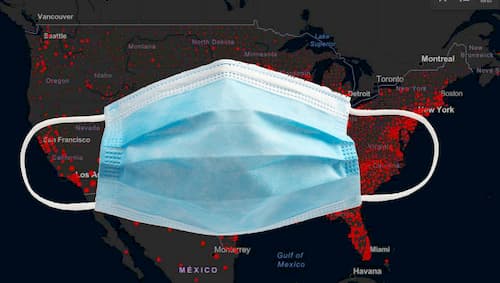
The numbers are sobering: While the U.S. Centers for Disease Control and Prevention (CDC) estimates that 3.2 million Americans are currently infected with the Hepatitis C virus (HCV), the World Health Organization (WHO) further estimates that a staggering 130–150 million people globally have a chronic HCV infection and that 350,000 to 500,000 people die each year from HCV-related liver diseases. While alarming, these data points are no surprise given that the vast majority of those infected with the debilitating, costly and life threatening HCV virus—the leading cause of advanced liver disease, cirrhosis, liver cancer and liver transplants—are entirely unaware and asymptomatic. As worrisome, since the virus often goes undetected, individuals often unknowingly transmit the disease to others. Even those who are aware of their HCV positive status face barriers relating to exorbitant drug costs, which can currently reach a prohibitive $1,000 a pill. One recent report even cited a “jaw-dropping” prediction that spending on HCV treatment would surge by more than 100% in 2014 and by more than 200% in both 2015 and 2016. View additional frightening factoids about HCV bulleted down below.
Because myths abound about how the HCV virus is transmitted, far too many—like those who have never used recreational drugs and/or shared a needle with another person, for example—erroneously believe they are not at risk and never get tested. Many are surprised to learn that the population most at risk is the swelling baby-boomer generation. In fact, individuals born between 1945 and 1965 are a whopping five times more likely to have HCV than any other age group due to both previous blood transfusion screening and lifestyle issues. The overwhelming majority (more than 75%) of Americans who today are living with HCV are baby boomers. This is why the CDC and the United States Preventive Services Task Force (USPSTF) recommends that everyone born between the years 1945 and 1965 get a one-time screening for HCV—testing that is covered by insurance plans and Medicare in many cases.
But, baby boomers are not the only critically high risk population for HCV. African-Americans also have a substantially higher rate of chronic HCV infection and are twice as likely as Caucasians to be infected. In fact, chronic liver disease, often HCV-related, is the leading cause of death among African-Americans between the ages of 45 and 64.
With all of this in mind, public health advocate Pernessa Seele, founder and CEO of The Balm In Gilead—a nonprofit organization that spearheads activism initiatives to proactively address life-threatening diseases like the silent but deadly viral HCV epidemic, is available for interviews and editorials on the reasoning’s, resolutions and frightening factoids (as listed below) regarding the rapidly escalating incidence of HCV in America.
For its part, HCV will be a primary topic of discussion at the upcoming Healthy Churches 2020 Conference to be held in North Carolina his November 13-15—an event Seele founded and oversees to directly address how faith-based communities, for their part, can play a more significant front-line role in addressing life-threatening diseases like HCV and others. Through this large-scale industry event, and also grassroots Town Hall Meeting forums that Seele hosts in cities across the United States, she is working tirelessly to educate regional populations on the risks and realities of HCV while concurrently helping faith-based organizations better achieve their community health-related goals.
“Our goal with executing events and forums, and our advocacy work at large, is to raise awareness about Hepatitis C and to mobilize communities all across America to get tested. Screening for Hepatitis C is the critical first step in connecting people with treatment and preventing the disease from spreading throughout our local communities, across the country and around the globe,” notes Seele.
“In addition, with so many Americans across a multitude of racial and age boundaries at high or direct risk for HCV, I also urge citizens to support common sense legislation like the Viral Hepatitis Testing Act (S.2538/H.R. 3723) that would help address this public health crisis by creating the first coordinated national system to address and combat viral hepatitis,” Seele continues. “By expanding hepatitis education, testing and care–with a concerted focus on reaching those most at-risk–this legislation would meet an essential need across the country. Indeed, this sound public policy will help ensure that baby boomers, African-Americans and other at-risk populations have unencumbered access to Hepatitis screening.”
Frightening Factoids about the Hepatitis C Epidemic and High Risk Populations Like Baby Boomers
Unless current trends are reversed, the CDC predicts that deaths due to hepatitis C will double or even triple in the next 20 years. Quick diagnostic testing of baby boomers and other at-risk individuals can help reduce the spread of hepatitis C by connecting infected individuals with education and treatment, while improving general awareness of the disease. The CDC and the U.S. Preventative Services Task Force (USPSTF) have both recommended one-time screening of Americans born from 1945 through 1965, and this testing is covered by insurance plans and Medicare.
–The majority of patients are asymptomatic
–Some patients may not have any symptoms for up to 20 years, and yet have liver disease progression
–Symptoms of HCV may include:
- Fatigue
- Nausea
- Poor appetite/weight loss
- Muscle and joint pains/weakness
- Jaundice
- Abdominal pain or swelling
- Dark urine
- Itching
- Fluid retention
–Progression of Hepatitis C
- For every 100 people infected with Hepatitis C
- 75-85 will develop chronic infection
- 60-70 will develop chronic liver disease
- 5-20 will develop cirrhosis
- 1-5 will die of cirrhosis or liver cancer
- 5-20 will develop cirrhosis
- 60-70 will develop chronic liver disease
- 75-85 will develop chronic infection
- Approximately 12,000 people die in the US every year from HCV related disease
–How it’s spread:
- Through BLOOD!
- Blood transfusions and organ transplants before the routine screening of the blood supply in 1992
- Blood contamination in medical settings
- Occupational blood exposure (needle sticks)
- Birth to an infected mother
- Sex with an infected partner
- Injection drug use / sharing needles
- Unsanitary tattoo application
–Persons with chronic HCV are at risk for cirrhosis, liver failure, liver cancer and/or death
–HCV Screening: Persons Most Likely to be Infected with HCV
- Adults born between 1945 and 1965 – “Baby Boomers”
- Selected medical conditions
- Recipients of clotting factors (prior 1987)
- Chronic hemodialysis
- Persistently abnormal ALT
- Recipients of transfusions or organ transplants
- Persons with recognized exposures (needle-sticks, mucosal exposures)
- Past or current injection drug use / sharing needles
- HIV-infected persons
- Birth to an infected mother
Baby Boomer Facts:
- Hepatitis C (HCV), which is already a greater epidemic in this country than HIV/AIDS.
- 1 out of 5 people with Hepatitis C don’t know they have it!
- More than 2 million U.S. baby boomers are infected with hepatitis C – accounting for more than 75 percent of all American adults living with the virus. Hepatitis C is a liver disease that results from infection with the Hepatitis C virus.
- While anyone can get Hepatitis C, more than 75% of adults with Hepatitis C are baby boomers – born from 1945 through 1965.
- Within the African American community, chronic liver disease, often Hepatitis C-related, is a leading cause of death among persons aged 45-64 years.
- The Centers for Disease Control and Prevention has strongly encouraged that EVERY baby boomer in the country be tested, at least, once for HCV.
- Hepatitis C causes serious liver diseases, including liver cancer (the fastest-rising cause of cancer-related deaths) and is the leading cause of liver transplants in the United States.
- The GOOD NEWS is that with early screening and treatment, the virus that causes Hepatitis C can be eliminated from the body and liver damage – even liver cancer – can be prevented.
Baby Boomers:
- Account for 76.5% of Hepatitis C Cases in the US
- Disease acquired in the 1980s and 1990s
- Individuals now presenting with liver cirrhosis and hepatocellular cancer
- 2X commoner in men than women
- 2X commoner amongst black men than Caucasian men
- All individuals in this birth cohort regardless of other risk factors should get a hepatitis C test
Conclusion
- There are many people infected with hepatitis C who do not know it
- If undetected and untreated, hepatitis C can cause severe illness and premature death
- There are simple, effective treatment with very few side effects available and more coming soon
- Get tested today!





